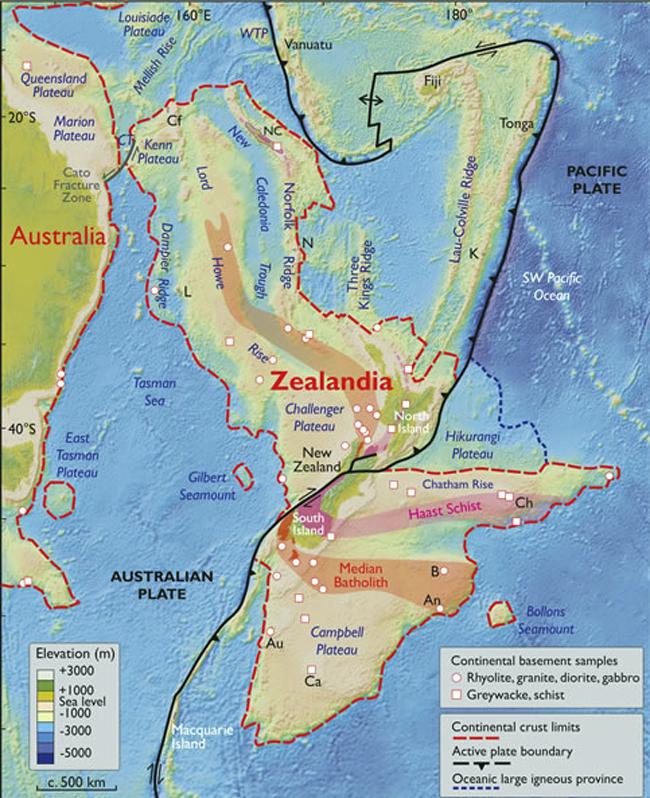Discovery of a New Continent: Zealandia
Oh My, Lantis! Previously suspected water-engulfed body of land located in the southwest Pacific Ocean was recently confirmed to be a continent. Researchers and geologists who discovered and validated this continent have named it “Zealandia.” A little-known fact is that this continent was not recently discovered for the first time; in fact, it has been acknowledged for quite some time now. However, new satellite data and rock samples have provided researchers with new and substantial data that suffices as a backing for the continent’s recent establishment.
“This is not a sudden discovery, but a gradual realization; as recently as 10 years ago we would not have had the accumulated data or confidence in interpretation to write this paper,” researchers wrote in GSA Today, a journal of the Geological Society of America. Recent information has proved that New Zealand and New Caledonia are in a 1.89 million-square-mile region that is completely separate from Australia. Zealandia is now referred to by many as the thinnest, youngest, most submerged continent on the planet.
As previously mentioned, the “new” continent on Earth concept isn’t new. A man named Hamish Campbell, in 2007, argued in his book “In Search of Ancient New Zealand” that Zealandia was completely submerged. This was, of course, until the shifting of Earth’s continental plates caused New Zealand and New Caledonia to emerge from underwater. The term “Zealandia” sprouted in 1995 thanks to Bruce Luyendyk, a geophysicist at the University of California at Santa Barbara.
Reportedly, Luyendyk never imagined Zealandia would be named as a “new continent.” He stated that his creation of the term was “out of convenience; they’re pieces of the same thing when you look at Gondwana (a 200 million-year-old supercontinent). So I thought, ‘Why keep naming this collection of pieces as different things?’” After all, Zealandia is really just made up of New Zealand, New Caledonia, and tiny little pieces of land from Gondwana.
Four basic criteria were used to guide the conclusion of any speculation about Zealandia. The first is that land pokes high up above the ocean floor. The second is that all three of the following types of rocks exist: igneous (spewed by volcanoes), metamorphic (altered by heat/pressure), and sedimentary (made by erosion). The third is that a thicker, less dense (compared to the nearby ocean floor) section of land is present. The final and only criteria by which New Zealand and New Caledonia weren’t officially confirmed to identify with is the presence of “well-defined limits around a large enough area to be considered a continent rather than a microcontinent or continental fragment.”
To learn more, go to http://www.inquisitr.com/3985577/zealandia-new-continent-found/
So whether you think this new continent is bogus or legitimate, there are authentic facts to back this recent officiation of Zealandia. Plus, now, if you go to New Zealand, New Caledonia, or the parts of Gondwana included, you can come home sporting Zealandia merch!! See if your friends can top your iheartzealandia shirt- because we all know they won’t be able to.

Hello everybody. My name is Nicole Anderson and I am a sophomore this year at Air Academy. I am notorious for singing horribly (and way too loudly) to...














Bethany Diaz • Mar 2, 2017 at 12:30 pm
The name doesn’t sound very cool, but it’s cool that we are still discovering so much new stuff in science and in the oceans especially.
Carter Rodny • Mar 2, 2017 at 12:27 pm
Did you know the tallest mountain in Oceania is in Papua New Guinea?